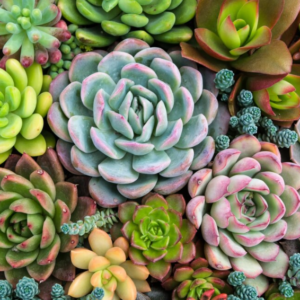Soil should be healthy for gardening and is very important in supporting life on our planet Earth. Soil health broadly includes the capacity of the soil to support life; this supports plants, animals and man. It is not just a supportive product for planting; it is a living ecosystem with a nutrient base, water regulator and home for many microorganisms.
With ever rising global demand that is put on production of foods, it is important that soil is well kept so that gardens and the systems that support food growth are sustainable. When gardeners learn about and care for the soil, they can promote conditions that are healthy for plants, and the garden, and hence the society.
Understanding Soil Health
Soil health measures the of a productive system by its ability to perform it in an agroecosystem soil acts live ecosystem that sustains plant, animal, and human life. Healthy soil: A richly organic medium with a vast population of beneficial micro-organisms and good structure, water retention, and drainage capabilities. It is a clean environment where nutrients are abundant, pests and diseases can be managed naturally, and plants grow at will. Soil health is based on several factors as below.
1. Soil Structure
Healthy soil has a good structure, which provides a balance of sand, silt, and clay particles with enough pore space for air to move in and out. You must be able to bury your roots deep into the water and bone-seated soil.
2. Ensure Incorporating Organic Matter
Organic material, such as compost (manure and decomposed plant), is an essential part of healthy soil. By improving soil structure, water retention, and supply of nutrients to beneficial microorganisms.
3. Soil pH
People were talking about nutrient availability and similarly, soil pH also affects nutrient availability. The majority of plants grow best in soil with a slightly acidic to neutral pH (6.0-7.0). This prevents nutrient absorption and plant growth and soil that is too acidic or alkaline can avoid them.
4. Soil Microbes
A rich soil ecosystem is full of microorganisms such as bacteria, fungi, and earthworms. They decompose and break down organic matter, and fix nitrogen in plants while controlling pests as well as diseases.
5. Nutrient Composition
Plants require essential nutrients, such as nitrogen, phosphorus, and potassium in the correct balanced portions. Plant health also depends on micronutrients, such as iron, manganese, and zinc.
The Role of Soil Health in Gardening
There are a few reasons why gardening has so much to do with soil health:
1. Soil Nutrients, Water, and Oxygen
Good soil provides healthy levels of all the minerals plants need to grow. Optimal soil health allows trees to establish strong root systems, fight off diseases, and increase yields.
2. Disease and Pest Resistance
Soil in good health also promotes the presence of helpful microorganisms, which can help you with even diseases and pests. Care of the soil food web helps reduce or eliminate chemical pesticides and fertilizers creating an environmentally friendly garden that will be more sustainable.
3. Water Component (Water management)
It means that soil should be able to hold water and at the same time drain Department dilutor one more characteristic with which we can check our garden Soil treating as healthy is by observing how much irrigation you are giving on regular basis. It will hold moisture during the dry spells and prevent water logging in heavy rainfall periods. This is important as equilibrium is required to maintain plant health and consistent growth.
4. Nutrient Cycling
Healthy soil recycles nutrients via the breakdown of organic matter and actions from microorganisms in the soil. This natural method leaves the plants with a consistent stream of food so there is no need to over-fertilize.
5. Soil
Healthier soils act as carbon sinks, help reduce greenhouse gas emissions, and can filter water pollutants. Gardens can directly support environmental conservation by maintaining proper soil health.
Soil Health Tips
Soil health is a process, not something that can be improved overnight, and it starts with getting to know your soil and understanding the nature of your soil. Here are some practical things you can do to improve soil health in your garden.
1. Test Your Soil
Before doing anything, you must understand the condition of your soil to begin with. By performing a soil test, you can determine your pH levels, nutrient makeup, and organic matter percentage. These results allow you to design your soil improvement methods.
2. Incorporate Organic Matter
Adding organic matter to the soil is considered one of the best ways in which you can enhance it. Add compost, well-rotted manure, or leaf mold to elevate the organic matter level in your soil. Organic matter helps in improving soil structures, water retention, and home for useful microorganisms.
3. Crop Rotation
Crop rotations are the practice of growing a series of dissimilar or different types of crops in the same area in sequenced seasons. It prevents the exhaustion of soil, suppresses pests and diseases in crop production, and facilitates kind attitudes toward seed conservation. It is for example from the field of legumes it helps to sequester nitrogen in soil, which later benefits another crop.
4. Plant Live Roots
Clover, rye, and buckwheat in addition to legumes that can add nutrients back into the soil via nitrogen fixation. Use cover crops, they help keep the water from running off, prevent erosion, and cut back on weeds while they also add organic matter to the soil when turned under. It improves soil conditioning and raises microbial activity.
5. Do Not Over Till
Although tilling can help to loosen soil that is compacted and provides better incorporation of organic matter, too much tillage disrupts the organisms living in your soil. Excessive plowing can cause soil erosion, degradation of organic material in the ground, and killing beneficial microorganisms. No, think no-till or at least reduced till.
6. Supporting A Good Soil pH
The pH of the soil changes which can result in altering nutrient availability and ensure that they remain within an acceptable geological range for your yield. If your soil is too acidic, you must raise the pH by adding lime. To satisfy this it should change the pH and use sulfur or organic matter to reduce too-high alkalinity. Practicing routine soil tests is a simple way to keep in line with your pH for adjustments.
7. Mulch Your Garden Beds
Mulching is the act of covering your soil surface with organic material — materials like straw, wood chips, or leaves. Organic mulch performs other important functions as well, such as retaining moisture in the ground, helping to suppress weeds, and regulating soil temperature. Mulch decomposes and contributes organic matter to the soil helping with good microbial activity.
8. Attract Beneficial Insects and Microorganisms
A healthy soil hosts an array of insects and microorganisms that cycle nutrients, control pests, etc. You can promote these helpful creatures by not using synthetic pesticides, offering them a place to live (such as compost and mulch) in your garden or yard, and growing plants that attract pollinators, wasps, and other beneficial insects.
9. Use Appropriate Watering Techniques
Stress can be created in plants and soil health hurts if a plant is overwatered or deprived of it for too long. Good watering practices, such as drip or soaker hose application, can assist in keeping soil moisture levels even while avoiding waterlogging and erosion. To avoid evaporation, another important thing to do is water in the early morning or late evening.
10. Think About Adding Soil Amendments
These extra nutrients could be in the form of soil amendments, made to your specific plot according to its requirements. You might add gypsum to crack open hard clay soils or sand if trying to create more draining in a compacted soil. Remember to use the suitable soil type and plant amendments
11. Use Integrated Pest Management (IPM)
IPM is an environmentally sensitive, effective, and economical program that combines methods to reduce pest populations while using a reserved number of synthetic pesticides. Soil health is needed to grow healthy plants, and you increase soil fertility by avoiding the use of chemical pesticides through IPM best practices.
12. Tractors
It is used on larger farms, or for your large (15-plus acre) gardens. Tractors and attached implements such as a cover crop crimper (left) can be used for tillage, organic matter application, and no-till seeding. Still, it is best to not over-till the soil and when using tractors, only those that benefit Kansas soils such as a rotary hoe or chisel plow.
Why Healthy Soil Has Long-Lasting Advantages
Healthy soil for garden is a good investment in the long term for both your garden and our environment. Going back to improve soil health allows for the following,
- Grows stronger, more robust plants help reduce potential crop failures due to adverse environmental conditions such as drought, high temps, and pests.
- Reduced Chemical Inputs: A known soil ecosystem that, in general, can control pests and diseases means the overall use of synthetic fertilizers or pesticides will be reduced. This results in a more economical gardening practice and ensures that the garden is always providing support for itself.
- For instance, consider soil fertility: as land becomes more abundant with easier energy from the sun it is getting to be high-quality self-fertilizing and hence more fertile. The soil is turned into a self-sustaining system that grows plants well, as more organic matter accumulates, and beneficial microorganisms proliferate.
- Protecting Our Planet: Keeping our soil healthy helps to protect the environment by decreasing erosion, increasing water quality, and storing carbon. Committed to the health of their soil, these gardeners steward it gently and in doing so are conserving that natural resource for future generations.
Conclusion
When it comes to gardening, the very foundation of success is soil health. Gardeners who know the value of healthy soil can grow gardens full of productive plants that work alongside, rather than against, our earth. Soil health leads to higher productivity and yield, and fewer chemicals are used in the operation or garden for all of us from a tractor farm up down even home gardeners. It is important to remember that healthy soil provides the foundation for your gardens, but also this cushion and current plant life. When you support soil health, it means that your garden and Mother Earth have something to fall back on.






